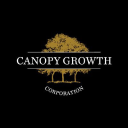/ factorpad.com / stocks / f59hcx.html
An ad-free and cookie-free website.
Our quantitative data points are meant to provide a high-level understanding of factors in equity risk models for Canopy Growth Corp. Portfolio managers use these models to forecast risk, optimize portfolios and review performance.
We show how CGC stock compares to 2,000+ US-based stocks, and to peers in the Manufacturing sector and Medicinal and Botanical Manufacturing industry.
Please do not consider this data as investment advice. Data is downloaded from sources we deem reliable, but errors may occur.
 Canopy Growth is a world-leading diversified cannabis and cannabinoid-based consumer product company, driven by a passion to improve lives, end prohibition, and strengthen communities by unleashing the full potential of cannabis. Leveraging consumer insights and innovation,the Company offers product varieties in high quality dried flower, oil, softgel capsule, infused beverage, edible, and topical formats, as well as vaporizer devices by Canopy Growth and industry-leader Storz & Bickel. Its global medical brand, Spectrum Therapeutics, sells a range of full-spectrum products using its colour-coded classification system and is a market leader in both Canada and Germany. Through its award-winning Tweed and Tokyo Smoke banners, the Company reach its adult-use consumers and hasbuilt a loyal following by focusing on top quality products and meaningful customer relationships. Canopy Growth has entered into the health and wellness consumer space in key markets including Canada, the United States, and Europe through BioSteel sports nutrition, and This Works skin and sleep solutions; and has introduced additional federally-permissible CBD products to the United States through its First & Free and Martha Stewart CBD brands. Canopy Growth has an established partnership with Fortune 500 alcohol leader Constellation Brands.
Canopy Growth is a world-leading diversified cannabis and cannabinoid-based consumer product company, driven by a passion to improve lives, end prohibition, and strengthen communities by unleashing the full potential of cannabis. Leveraging consumer insights and innovation,the Company offers product varieties in high quality dried flower, oil, softgel capsule, infused beverage, edible, and topical formats, as well as vaporizer devices by Canopy Growth and industry-leader Storz & Bickel. Its global medical brand, Spectrum Therapeutics, sells a range of full-spectrum products using its colour-coded classification system and is a market leader in both Canada and Germany. Through its award-winning Tweed and Tokyo Smoke banners, the Company reach its adult-use consumers and hasbuilt a loyal following by focusing on top quality products and meaningful customer relationships. Canopy Growth has entered into the health and wellness consumer space in key markets including Canada, the United States, and Europe through BioSteel sports nutrition, and This Works skin and sleep solutions; and has introduced additional federally-permissible CBD products to the United States through its First & Free and Martha Stewart CBD brands. Canopy Growth has an established partnership with Fortune 500 alcohol leader Constellation Brands.
Many of the following risk metrics are standardized and transformed into quantitative factors in institutional-level risk models.
Rankings below represent percentiles from 1 to 100, with 1 being the lowest rating of risk.
Stocks with higher beta exhibit higher sensitivity to the ups and downs in the market. (↑↑)
Stocks with higher market capitalization often have lower risk. (↑↓)
Higher average daily dollar volume over the past 30 days implies lower liquidity risk. (↑↓)
Higher price momentum stocks, aka recent winners, equate to lower risk for many investors. (↑↓)
Style risk factors often include measures of profitability and payout levels.
Companies with higher earnings generally provide lower risk. (↑↓)
Companies with higher dividend yields, if sustaintable, are perceived to have lower risk. (↑↓)
/ factorpad.com / stocks / f59hcx.html
A newly-updated free resource. Connect and refer a friend today.